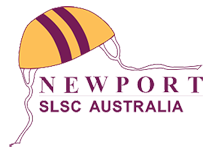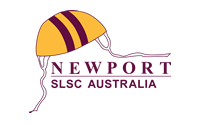Surf Sports & Competition
Being active is part of the Australian way of life.
The Surf Life Saving movement encourages members to be active, to do more and to be more.
Our sport forms a significant component of who we are as an organisation. From Nipper to elite Ironman and Ironwoman, all our members have the opportunity to participate in local, regional, state, national and international surf sports competitions. Unlike other sports, the purpose of competition is to improve lifesaving skills to keep our beaches safe. There are many disciplines to cater for everyone’s interest. From swimming events to board or ski paddling as well as events that don’t even require you to get your toes wet such as beach sprints and beach flags events. Off the beach, surf lifesavers are also required to refine their swimming skills in the pool and participate in pool rescue competitions.
Quick Links – Competition Events
- Competition on the sand »
- First aid »
- Inflatable rescue boat (IRB) racing »
- March past »
- Rescue and resuscitation »
- Surf boat rowing »
- Water events – swimming, boat and ski »
- Multi-discipline events »
Competition on the Sand
Beach events are held on the sand and include events such as:
Beach sprint – competitors race on a straight sand course of approximately 70 – 90 metres to the finishing line.
Beach relay – teams of 4 competitors race on a straight sand course of approximately 70 – 90 metres with a baton, running one lap each. The final runner of a team over the finish line wins.
Beach flags – competitors start lying on their stomach facing away from a baton/s buried in the sand approximately 15 – 20 metres away. There is always less batons than competitors. On the starting gun, competitors rise, turn and race to secure a baton. The competitor(s) who fail to obtain a baton are eliminated. The process repeats until there is a single winner.
2 km beach run – U15 to Opens & Masters competitors race on a sand course in four laps of 500 metres to total approximately 2 km.
1 km beach run – Masters competitors 64+ race on a sand course in two laps of 500 metres to total approximately 1 km.


First Aid
First aid and Lifesaving competitions are set to challenge a person’s lifesaving skills, putting them in scenarios and scoring them on how they handle it.
Events include:
- First Aid Competition
- Champion Lifesaver
- Patrol Competition
Inflatable Rescue Boat (IRB) Racing
Inflatable Rescue Boat (IRB) competition aims to:
- Improve the skills and technique of IRB drivers and crew
- Allow crews to demonstrate their techniques and abilities to perform rescues
- Bring crews together to discuss and improve IRB techniques and operations
- Promote safety awareness techniques for the crew and patients in simulated rescue scenarios
Competition Dates
IRB Racing takes place every winter season.


March Past & Colour Party
March Past is one of Surf Life Saving’s original events and represents the traditional discipline of a surf lifesaver. Teams, often dressed in full length club swimming costumes, march in time to music around a set course carrying a surf reel, line and belt and following their standard (flag) bearer.
Teams march in formation following commands and they are judged on factors such timing, arm and leg swing, space and dressing, body carriage and presentation.
The Colour Party follows the March Past and has a history stemming from the military tradition where service people and volunteers marched carrying flags.
Rescue and Resuscitation
The Rescue and Resuscitation (R&R) competition provides the opportunity for SLSA members to demonstrate in a competitive manner some traditional rescue and resuscitation techniques used in Surf Life Saving.
The term “R&R” comes from the core business of surf lifesaving which is “Rescue and Resuscitation”. Today the rescue is done more than likely by a member using a rescue tube, rescue board, IRB or Jet Ski. In the past rescues were carried out by a group of members using the reel, line and belt, the rescuer donning the safety belt with the line attached and swimming out to sea to collect the patient. The reel, line and belt still form the rescue equipment in R&R competition today.

Since the inception of surf lifesaving, competition amongst surf club members and surf clubs was inevitable and the R&R event was developed. As the name implies it is Rescue and Resuscitation of a patient still using the absolute icon of surf lifesaving, a reel, line and belt. Competitors are assessed and marked on their performance through the whole competition. The event requires that each team member focus and undertake each task with precision so as not to incur any point’s deduction. The winner is the team with the least number of points at the end of the event.

Surf Boat Rowing
A boat crew shall consist of five competitors, four of whom shall be “rowers” and a “sweep” who controls the boat by use of a sweep oar and commands to the rowers. Boat crews start at the water’s edge holding their boats ready. On the starting signal, crews row around their assigned turning buoy situated approximately 400 metres off shore and return to the beach. The winner is the first crew to pass their boat between the finish flags on the beach.
More information: If you require any more information please contact our surf boat captain.
Water Events – Swimming
Swimming ability is a prime factor in surf lifesaving. SLS Swimming events have been designed to encourage members to keep fit for lifesaving duties. Events include:
Surf Race – the Surf Race involves swimmers starting on the beach and then running, wading and swimming about 170 metres to sea to round as set of buoys and then return to the beach. The event concludes with a run finish to the flags placed on the beach.
Belt Race – the Surf Belt race involves the use of the surf reel, line and belt and is one of the most prestigious and traditional races in surf lifesaving competition. The event begins on the beach with the swimmer placing the belt around their waist and towing a surf line out to their allocated buoy and signalling their finish. The Belt swimmer is assisted by three linesmen and a reel handler.

Rescue Tube Rescue race – the rescue tube rescue event features four team members: a patient, a rescue tube swimmer and two rescuers/assisters. The event commences with the patient swimming to their allocated buoy and signalling back to the beach. The rescue tube swimmer then swims to rescue the patient with the assistance of swimming fins and a rescue tube. Upon arrival at the buoy the rescue tube swimmer harnesses the patient into the tubes and swims back to the beach. As the rescue tube swimmer and patient approach the shore the two rescuers enter the water to assist in getting the patient across the finish line.
Rescue Tube Race (two person) – the two person rescue tube race is similar to the 4 person rescue tube rescue race except without the assistance of the two rescuers. The patient swims out to the buoy, signals the rescue tube swimmer who then swims out (with the assistance of fins), collects the patient and swim them back to the finish line on the beach.
Rescue Tube Race – the rescue tube race is contested on the same course as the surf belt race. When the race commences the competitors must run up the beach to collect their rescue tube, turn and race to the water and swim to their allocated buoy to signal their finish of the race.
Run-Swim-Run – this event is run across a normal swimming course with the competitors commencing the race by running approximately 200metres to round a flag on the beach before embarking on a swim around a set of buoys and then back to the beach. Once the competitors complete the swim leg they must then run around the same flag as the start of the race and sprint to the finish.
Wading Race – the wade race is a popular amongst younger athletes (Nippers) and involves running out to an allocated a turning mark at knee depth water and then the competitors may either wade, dive or swim along the beach to another marker before returning to the beach to run to the finish line.
Wading Relay – the wading relay is a four person event where competitors complete the wade race one at a time and tag the next person who then continues on. The race is completed once the fourth and final team member finishes the wading course and runs up the beach to the finish line.

Water Events – Board & Ski
Single surf ski race – from a floating start, competitors paddle their surf ski around three buoys and return to the finish line. The finish is judged when any part of the surf ski crosses the finish line with the competitor and their paddle all in contact.
Double surf ski race – from a floating start, competitors (two per ski) paddle their ski around three buoys and return to the finish line. The finish is judged when any part of the ski crosses the finish line with both team members and at least one paddle in contact with the ski.
Surf board race – from the beach (standing start) each competitor enters the water with their surf board, paddles around all buoys and returns to the beach. The winner is judged by the first competitor to cross the finish line on their feet and in contact with their board.
Multi Discipline Events
Ironman/Ironwoman – The Ironman and Ironwoman events are conducted over a course consisting of three legs, including a swim, surf ski and surf board. The race concludes with a beach sprint to the finish line. The order of the legs may vary and is decided by draw prior to the event.
Taplin Relay – Teams of swimmers, board paddlers and ski paddlers, compete together as a team relay over an Ironman course. The order of the legs may vary and is decided by draw prior to the event.
The Taplin Relay event may be conducted in three person (one swimmer, one surf board and one surf ski paddler), six person (two competitors for each water leg), or four person (one competitor per water leg plus a beach sprinter to complete the race) variations.
Surf Board Rescue Race – This two-person event comprises of a surf swimmer and a surf board paddler. The race commences with the swimmer swimming to their allocated buoy and then signalling back to the beach for their board paddler to come out and collect them. Once the paddler reaches the swimmer, the two paddle their board back to beach and cross the finish line.

![]()

Nippers
Our Nippers compete both on the beach and in the water, with the support of our amazing coaches, water safety and officials (all parents of the competition group).
More information »

Under 15yrs – Open
From Nipper to elite Ironman and Ironwoman, all our members have the opportunity to participate in local, regional, state, national and international surf sports competitions.
More information »

Masters (30yrs +)
Masters competition is viewed as an encouragement to SLSA members to continue their participation in life saving and enjoy the associated activities.


